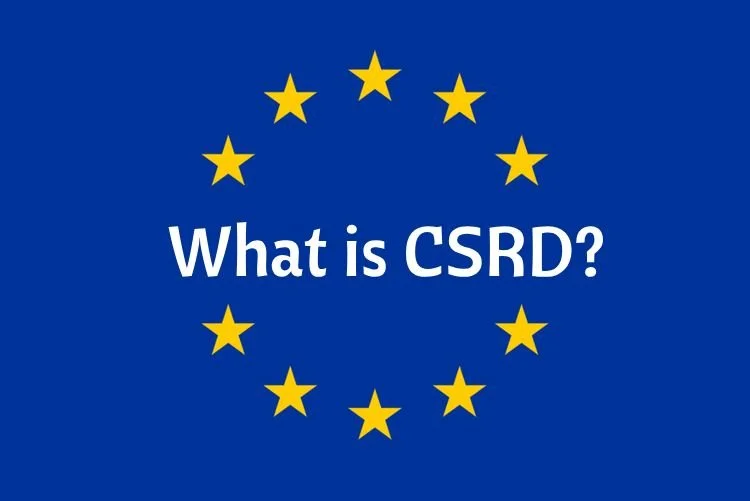Understanding CSRD
In a world where the climate crisis and social inequalities increasingly dominate all headlines not just financial ones, the demand for corporate transparency has never been higher.
Consumers, investors, and regulators are calling on companies not just to commit to sustainability but to prove it. This push towards a greener and more equitable corporate landscape has paved the way for landmark legislation like the Corporate Sustainability Reporting Directive (CSRD) and the intricate dance with the Environmental, Social, and Governance (ESG) taxonomy. But what does this mean for the average company, or the everyday investor trying to make sense of it all? I will try to demystify (as best as I can) the CSRD and its implications for businesses and stakeholders, illustrating not just the requirements but the reasons of why it matters.
Understanding CSRD
Imagine a world where every business not only claims to be "green" but also requires to prove it. This is the vision behind the Corporate Sustainability Reporting Directive (CSRD) in the European Union, and their strategy to enhance transparency and drive sustainability efforts across companies avoiding the greenwashing happening in the ESG scene. Introduced as a successor to the Non-Financial Reporting Directive (NFRD), CSRD extends the sustainability reporting requirements to a much wider range of companies, including SME, large companies and all listed companies, affecting nearly 50,000 businesses across Europe.
The CSRD Journey: At its heart, CSRD is about telling the full story of a company's impact on the world. It's not just about the profits made but about how these profits are earned — the environmental footprint, the social implications, and the governance practices. From 2024 onwards, affected businesses will start reporting on these aspects in a more detailed and standardized manner, ensuring that sustainability reports are as reliable as financial ones.
The ESG Taxonomy Explained
As we navigate the narrative of sustainability reporting, we encounter the ESG taxonomy — the language that helps describe a company's environmental, social, and governance practices in measurable terms. It's like a dictionary for sustainability, providing clear definitions and criteria for what counts as sustainable activities.
Why ESG Matters: The ESG taxonomy is crucial because it helps investors, customers, and regulators understand how companies perform on critical sustainability issues. For example, it clarifies which activities contribute to environmental objectives, such as climate change mitigation or biodiversity protection, and outlines the social and governance standards companies must meet. This clarity enables stakeholders to make informed decisions based on a company's ESG performance.
Implications for Businesses and Investors
The introduction of CSRD and the ESG taxonomy might seem daunting for businesses at first glance. Suddenly, companies are required to provide detailed data on their sustainability efforts, from how they manage their waste to how they ensure fair labor practices. This shift demands significant changes in internal reporting processes and, for many, an overhaul in strategy towards more sustainable practices.
For Investors, this new wave of detailed reporting is a boon. It allows a deeper analysis of potential risks and opportunities, helping them steer their investments towards companies not just with financial promise but with a commitment to sustainability. However, this wealth of information also requires investors to be more discerning, to understand and interpret the nuances of ESG data accurately.
Global Impact and Future Outlook
The ripple effects of the CSRD and its alignment with the ESG taxonomy are poised to be felt far beyond European borders. As companies globally vie for investment from an increasingly ESG-conscious market, the standards set by the CSRD could become a benchmark for sustainability reporting worldwide. This global shift towards transparency and sustainability is not just about regulatory compliance; it's about building trust with stakeholders and securing a company's place in a future where sustainability is at the forefront of business success.
Looking Ahead: As we look to the horizon, the narrative of sustainability reporting is only getting started. We can expect further refinements in ESG criteria and reporting standards, driven by technological advancements and the evolving understanding of sustainability. Companies that embrace this trend, viewing it not as a burden but as an opportunity to innovate and lead, will be the ones telling the most compelling stories in the future.
In Conclusion, the CSRD and ESG taxonomy are more than just regulatory requirements; they are chapters in the larger story of our global shift towards sustainability. By weaving these frameworks into the fabric of their operations, companies are not only contributing to a more sustainable world but are also securing their place in the future market landscape. For investors, regulators, and consumers alike, these developments offer a clearer lens through which to view the sustainability narrative, bringing us all closer to a future where businesses thrive in harmony with the planet.

